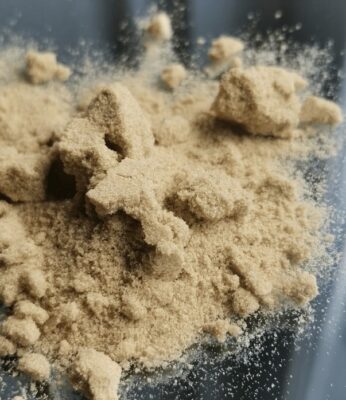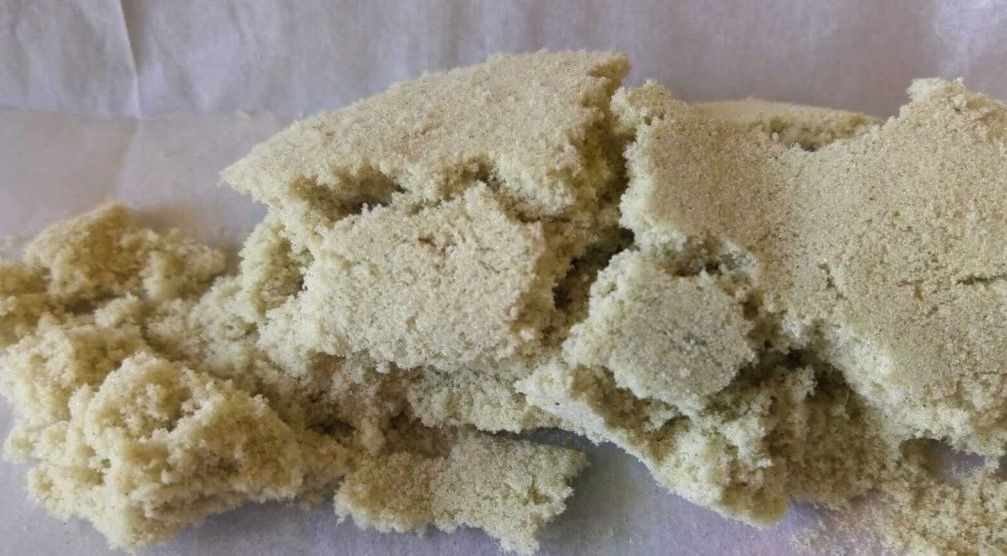Uncategorized
Dry Sift Hash Guide
Dry Sift Hash is one of the simplest types of hash to make. It only needs a little equipment and processing power, yet it has the ability to surpass Bubble Hash as a high-quality solventless source material for rosin. But just because making Dry Sift Hash is simple doesn’t imply it’s straightforward. Especially if top quality is important.
Sifting cannabis that is dried and cured lets us isolate trichome heads from their stalks, which allows us to capture the most potent aspects of the plant. Dry sifting is a process that only uses your two hands and some screens that are designed for this specific purpose; no solvents are necessary for extraction. It’s simpler than bubble hash because it doesn’t require the extra steps of washing and drying, or supplies like a sprayer, multiple work buckets, ice, etc.
The aim of sifting, or sieving as it’s also known, is to remove the trichome heads from their stalks after they’ve grown and developed. The trichome heads fall out of their stalks when they are small enough to go through the tiny holes in the sifting screens. Trichomes fall through the screen where they may be gathered without using solvents, making dry sift hash a special kind of cannabis concentrate. Its high amounts of cannabinoids and terpenes make it an excellent choice for pressing rosin.
Dry sift hash of the highest quality is essentially potencies personified. cartels have nothing on this kind of product because any full-melt hash using dry sifting techniques can be achieved without washing it, meaning additional equipment isn’t needed.
History of Dry Sift Hash
Hash is a form of cannabis that is made by collecting the sticky trichomes from the plant and concentrating them into a resin. Hash has been used for centuries in many cultures, and it remains popular today. There are different methods of making hash, but hand-rubbed hash is one of the simplest and most ancient forms.
 Sieving cannabis, on the other hand, is a relatively recent approach of generating hash, coming into use just in the last 70-80 years. This contemporary method of isolating and collecting cannabis resin has less effort, more yield, greater potential potency, higher purity, and a longer shelf life than its hand-rubbed counterpart. It’s evident that dry sifting cannabis in the late 20th century was a major step forward for solventless marijuana concentrates.
Sieving cannabis, on the other hand, is a relatively recent approach of generating hash, coming into use just in the last 70-80 years. This contemporary method of isolating and collecting cannabis resin has less effort, more yield, greater potential potency, higher purity, and a longer shelf life than its hand-rubbed counterpart. It’s evident that dry sifting cannabis in the late 20th century was a major step forward for solventless marijuana concentrates.
The technique of collecting trichomes straight from the floor was used initially to make Dry Sift Hash. Cannabis plants were carefully picked and collected after being harvested and dried. This was referred to as “carpet collection” and was practiced well into the 1960s.
The practice of dry sifting with screens, which we employ today, came from a simpler carpet removal. The extraction of solventless cannabis concentrates and their methods has always changed as new technology and greater knowledge of the cannabis plant have emerged. Today’s innovation is as innovative and revolutionary as ever before.
The Pros And Cons Of Dry Sift Hash
There are many methods beginner and experienced individuals can use when discussing how to make concentrates. These techniques vary in: Difficulty level Yields Practicality Cost So the best option for you may depend on your motives and experience with making concentrates. Generally, Dry Sift Hash is considered the easiest method because it requires little to no experience to successfully isolate trichomes from plant material.
The Dry Sift Hashing method and water hash are two widely used methods for making hash. Here, we’ll compare the two process so that you can decide which one will work best for you.
Quality
Dry Sift Hash isn’t the best method to make excellent hash. Water hash, for example, is a more refined process than Dry Sift Hash that results in a superior product because it filters out impurities twice, first with water and then with a filter screen. This doesn’t imply you can’t produce high-quality dry sift hash; often kief is utilized to create resin. So if you want to create six-star full melt hash, Dry Sift Hash isn’t the way to do it.
Your product’s outcome is only as good as the quality of your starting materials, so use high-quality flower to make great hash.
Yield
 When creating water hash, you will use numerous filter bags of mixed sizes so that you can gather most trichomes – big or small.
When creating water hash, you will use numerous filter bags of mixed sizes so that you can gather most trichomes – big or small.
However, when Dry Sift Hashing, you would usually select one filter screen size. But don’t worry–nowadays there are filter screens that can be used together. Even though they’ve improved, you generally have to filter with one micron size at a time so you will have to choose between yields and quality. As a result, this will either lead to a lower yield or lower quality product.
Practicality
Dry Sift Hash is one of the most simple methods to create hash. Dry Sifting requires much less equipment and experience than making water hash would, making it a more popular choice among users.
Kief is a considerably faster procedure than Water Hash that does not require any special equipment or expertise. The entire procedure, depending on how you do it, may take less than 20 minutes. You will also need to dry the final product before consumption with Water hash because of its high demand for expensive equipment and big amounts of water and ice.
Cost
When it comes to the initial investment, Dry Sift Hash takes the cake; regardless of whether you’re making it at home or in a commercial operation, producing water hash correctly demands costly equipment and extensive expertise if you want to get the most out of your plant material and technology.
Making Dry Sift Hash is not difficult and takes very little time, so if you’re a home grower looking for an easy way to produce high-quality kief, this is it.
Both of these methods have their own advantages and disadvantages, so it really depends on your specific needs as to which one you choose. For most home growers, Dry Sift Hash is the better option because it’s cheaper and easier; However, as you gain more experience, you may want to upgrade your equipment and move on to water hash. But for most consumers, Dry Sift Hash will suffice.
How To Make Dry Sift Hash Step-By-Step
The process of making dry sift hash is very much like that of making kief, but instead of using a grinder, you will need to invest in a pollen box, micron extraction bags made to measure, or some other type choice of sifter box.
A pollen box is a mesh grid and collection chamber all in one. It resembles a box (typically constructed of plastic or wood) and uses mechanical agitation to filter the trichomes. Pollen boxes are inexpensive, so it’s worth investing in one if you intend on dry sifting on a regular basis.
Experienced hash makers use a set of pollen boxes or filter bags with mesh sizes that get progressively smaller. This allows them to separate the trichome heads from any extra plant material for a qui=te refined product.
Now we can review the process of making dry sift hash at home. All you really need is some bud, your pollen box/micron bags, and something to collect your kief with (like a card or knife).
- Step 1: Prepare Cannabis Material
Begin with a sufficient quantity of plant material to ensure the best grade and quantity of hash. You’ll need enough for it to be worthwhile, whether you’re drying and curing buds or trimmings from your previous crop. A 28–50 gram starting point is adequate; if not more,
If using buds, note that they should be broken down somewhat to expose more of the surface area to the mesh. You definitely don’t want to grind your bud before sieving it, but you should break it up into smaller chunks.
- Step 2: Freeze Your Plant Material
Do you want to make the process simpler and get better outcomes? Consider freezing your buds before sifting. Before you begin the dry sift method, chill your plant material for 24 hours. The trichomes will become brittle after being frozen, making them much easier to remove as you continue sifting.
In addition, many hash makers believe that it is more effective to process this type of hash in a colder setting–such as an air-conditioned room. Doing so keeps the flowers and trichomes dry and firm while also preventing them from sticking together.

- Step 3: Prepare Pollen Box / Extraction Bags
Get your pollen box or series of micron mesh bags ready. Make sure whatever you use to sift the material is tough and has a collection chamber at the bottom. You don’t want to lose any trichomes during the process.
The finest grade of dry sift hash is made by sifting through many pollen boxes or micron extraction bags, each with a progressively finer mesh. This will result in the best-quality product while also allowing you to work with different grades of dry sift hash.
- Step 4: Start Sifting
To begin, take a few handfuls of frozen flowers or trim and put them onto the mesh surface of the pollen box, or into the first micron bag.
To create a fine layer of trichomes, shake the box/bag from side to side and backward and forward. If necessary, roll or “card” the buds—that is, apply pressure with an object like a credit card—to break the bud down further and expose more trichomes to mesh.
You will need to repeat this process until you have the ideal level of trichomes. This could take up to half an hour, depending on how large your stash is and how small your pollen box or micron bag system is.
- Step 5: Careful Collection
Now that the trichomes have collected, it’s time to remove them from the bottom of the pollen box. Use a fine-edged instrument to scrape off the trichomes and transfer them to another container.
You can compress your dry sift, sprinkle it on bong bowls, or use other methods to extract cannabinoids from your product.
How to Press Your Dry Sift Hash Into Hash Blocks
Now that you have the weed, it’s time to figure out how to use it. You can sprinkle in joints or on bowls, make edibles, but we think pressing into hash blocks is best for new dry shifters.
Pollen presses are becoming more popular by the day, and they can be purchased from a variety of sources. To use one, simply add a small amount of your dry sift hash to the press and twist the knob. Be careful not to overfill the press; if you do, your block of hash may become crumbly and uneven.
How To Store Dry Sift Hash
Kief is usually worked (by applying pressure and heat) to give a more hashy consistency, allowing it to be stored in silicone containers or parchment paper. However, if you want to keep kief as is, it’s best to store it in glass jars.
If you’re going to keep it for a long period of time, store it in a vacuum-sealed Ziploc inside a glass jar in the fridge. Mold and keeping it fresh for months are two main problems that can arise from oxygen, heat, and high humidity levels. Keeping your Dry Sift Hash as far away as possible from oxygen, heat, and excessive humidity is critical to preserving it.
In Conclusion
If you want to get more out of your cannabis high, dry sift hash (kief) is a great way to do it. You can make rosin or hash from kief, and then smoke it in joints, bongs, blunts, or whatever you prefer. Kief is also a great way to smoke resin because it doesn’t cost much money.
Please leave a comment in the common section beneath if you have any helpful hints and methods for new concentrates growers who are just getting started!


